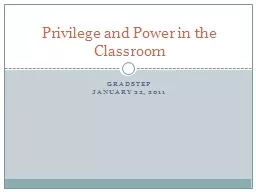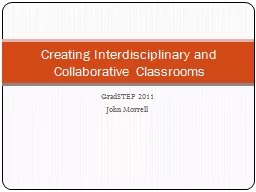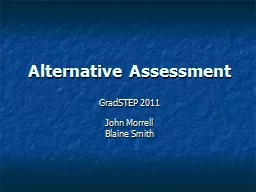PPT-GradSTEP
Author : giovanna-bartolotta | Published Date : 2017-06-01
January 22 2011 Privilege and Power in the Classroom Identity What do people notice about you when walk into a room List at least 10 things Rank them in order
Presentation Embed Code
Download Presentation
Download Presentation The PPT/PDF document "GradSTEP" is the property of its rightful owner. Permission is granted to download and print the materials on this website for personal, non-commercial use only, and to display it on your personal computer provided you do not modify the materials and that you retain all copyright notices contained in the materials. By downloading content from our website, you accept the terms of this agreement.
GradSTEP: Transcript
Download Rules Of Document
"GradSTEP"The content belongs to its owner. You may download and print it for personal use, without modification, and keep all copyright notices. By downloading, you agree to these terms.
Related Documents



